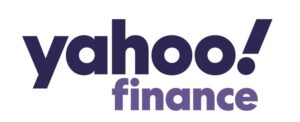By Gehazi Whitehurst
In a perfect world, we would have one giant monthly payment that accounts for everything we are going to spend our earnings on. Alas, a real-world budget doesn’t work like this, and on top of our money going towards various fixed monthly expenses, discretionary spending is where the real budgeting troubles can begin.
Whereas budgeting for things like your monthly rent can be relatively easy in college, determining the amount of money you can spend for any given month is challenging. In discovering the best budgeting method for me when it comes to discretionary spending, an article from First State Community Bank lays out the most crucial steps in the process.
In the article 4 Steps for Tracking your Discretionary Spending, the first point it makes is on money management tools: “If you want to make a change to your spending habits, awareness is the best place to start.
I started using the money management tool offered through my own personal bank, and it’s true — being aware of exactly what things I spent my money on made me more conscientious in the future. The article’s second and third steps on breaking down spending by category, as many money management tools will do for you, will also increase awareness. For example, when I found out I was spending an average of $200 or more on restaurants, I could realistically scale back this category. Even aiming to spend just $160 the next month in this category made significant changes. Once you cut back realistically on several categories, budgeting becomes so much easier.
Unfortunately, it’s not always enough to know that you spend a lot on shopping because you don’t actually know how much is too much. The final point from the article recommends placing discretionary funds into a separate bank account stating, “Bills can be paid through one account, and your flexible spending can come from another account that is funded with your monthly budget allotment.” I opened a savings account early last summer, and any money I earned went directly to that account. If I set a goal of $300 for all my discretionary spending categories combined for the month, that was the amount I would transfer to my checking account from savings.
The continued income I would make for the month would stay in my savings account for monthly fixed expenses. With this method, I could see if my discretionary spending goal was reasonable, and the money management tool I have allowed me to adjust any categories further to set a better discretionary goal for the next month. Also, this helped me slowly save money over time, as I’ve come to find the sweet spot for spending.
These are just the general steps for mapping discretionary spending but being realistic is the real key. We all know life happens, so be flexible with yourself. From one college student to another, it is possible to have a real budget if you put in real effort.
Whitehurst is a junior journalism major at the University of Missouri.





